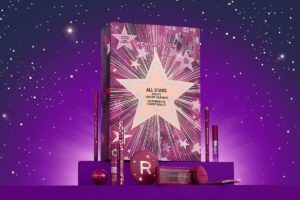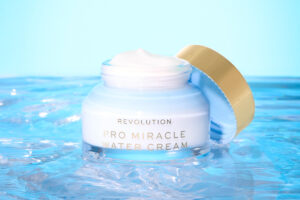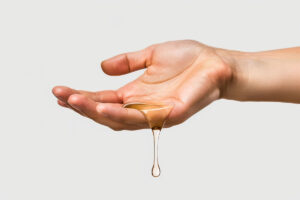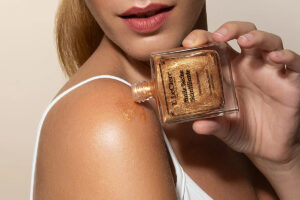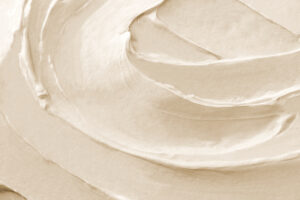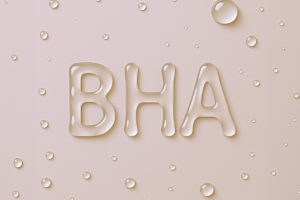In the world of skincare, few ingredients attract as much attention as glycolic acid. If you’ve ever considered a solution for acne, hyperpigmentation, or first wrinkles, you’ve likely come across this powerful active ingredient. But what exactly is glycolic acid, and why do many call it the ‘gold standard’ when it comes to chemical exfoliation?
In this blog, we’ll uncover what glycolic acid is, how it works on the skin, its benefits, and what you should pay attention to when using it. Whether you’re new to acids or already using them, we’ll help you decide if glycolic acid suits your skin and how to use it safely.
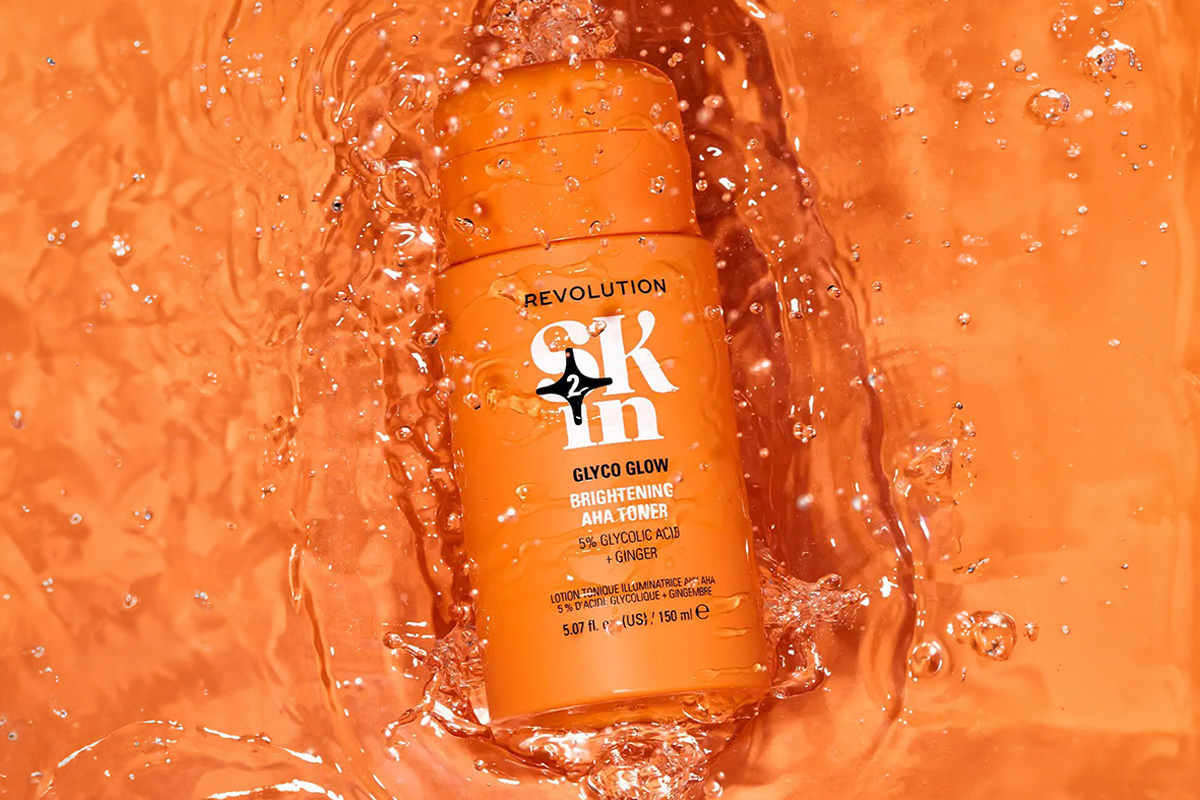
What is Glycolic Acid and How It Works on the Skin
Glycolic acid is one of the most well-known and frequently used AHAs (Alpha-Hydroxy Acids) in cosmetics. Naturally derived from sugar cane, it’s famous for the small molecules in its structure, which allow it to penetrate deeper into the skin compared to other AHAs.
How Glycolic Acid Works
Glycolic acid functions as a chemical exfoliant, meaning it dissolves the bonds between dead skin cells on the surface, allowing them to be more easily removed. This initiates the skin’s renewal process, making it smoother, more radiant, and more even in tone and texture.
Besides exfoliation, it stimulates collagen production, which can help maintain skin smoothness and elasticity.
Features and Benefits of Products with Glycolic Acid
If we had to describe glycolic acid in two words, they would be: effective and versatile. That’s because it works quickly and directly, without much waiting for its first effects to show.
It’s precisely this quality that makes it one of the most valued ingredients in modern cosmetics, especially when the goal is:
- evening out skin tone;
- reducing fine lines and discolourations;
- minimizing blackheads, pimples, and uneven texture.
What further sets it apart is the fact that glycolic acid isn’t just an exfoliant. It simultaneously increases the skin’s moisture levels, as it has the ability to bind water. It allows for better absorption of other active ingredients, such as niacinamide, vitamin C, or hyaluronic acid.
In home use products, glycolic acid is typically found in milder concentrations (up to 10%). These concentrations are quite sufficient to initiate the skin’s regeneration process without disrupting its natural barrier. That’s why it’s often present in products for face and body care.
In professional treatments, glycolic acid concentrations can reach up to 70%. Revox B77 Just Glycolic Acid night serum contains a 20% concentration. In the evening, apply 4–5 drops to clean, completely dry skin, avoiding the eye area. Gently massage it in, and rinse your face with water after 10 to 15 minutes.
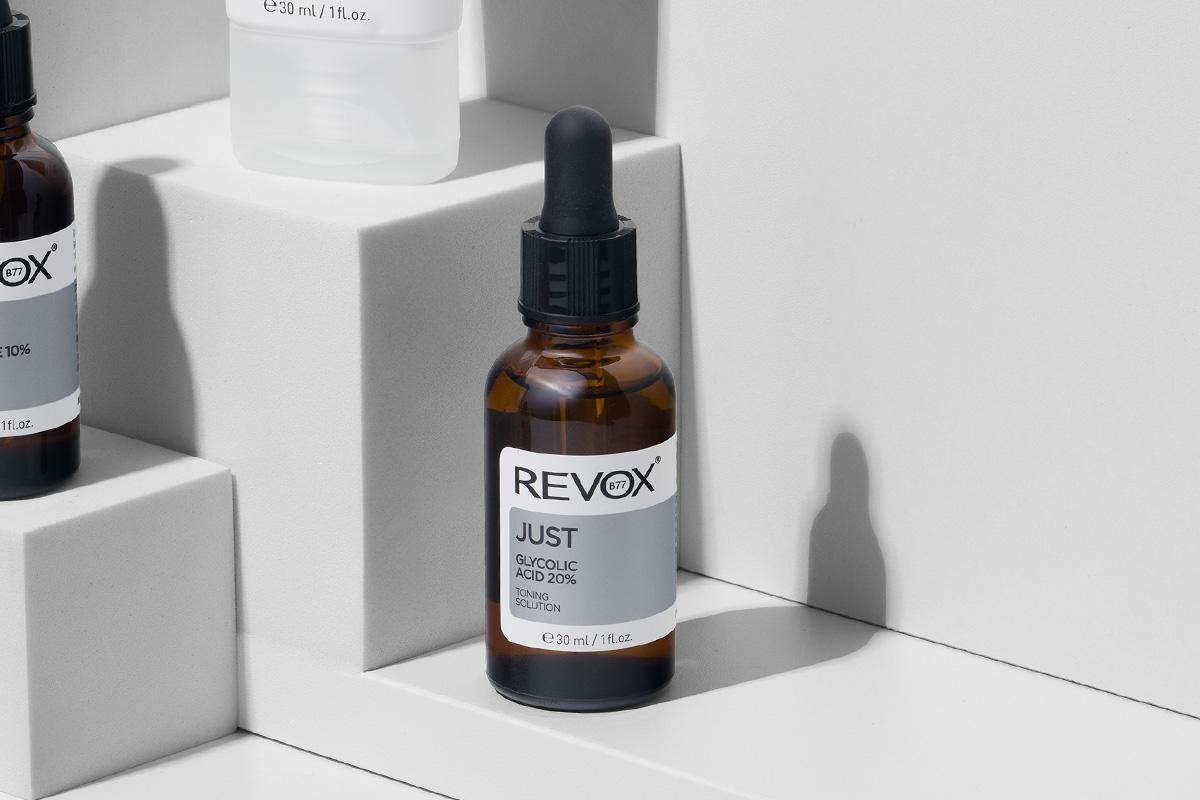
Glycolic acid should be introduced gradually, especially if you have sensitive skin. Sun protection is essential, as exfoliated skin is thinner and more vulnerable. Proper SPF can be the difference between healthy, well-cared-for skin and unwanted irritation.
So, if you’re thinking about adding this ingredient to your skincare routine, choose your products carefully and take a thoughtful approach. With consistent use and a little patience, the results won’t disappoint. Whether you’re aiming for a brighter complexion, fewer blemishes, or overall healthier-looking skin, you’ll see the benefits.
When Your Skin Craves Freshness, Glow, and Balance
Glycolic acid is a versatile ingredient that tackles a range of skin conditions – from improving texture and tone to treating acne and hyperpigmentation. Its ability to gently yet effectively remove the surface layer of dead skin cells makes it a great choice for those looking for a fresher, more even, and healthier-looking complexion.
Depending on the concentration and formulation, glycolic acid can be used both in daily skincare routines and as part of more intensive treatments. It’s also very effective for treating small breakouts, scars, rough skin and ingrown hairs. That’s why it’s applied to various parts of the body – most commonly the face, but also the back, shoulders, upper chest and legs.
How It Works on the Face
Glycolic acid is an effective ally in caring for skin prone to acne, hyperpigmentation, uneven tone, and changes caused by environmental factors and time.
It’s commonly found in facial cleansing products such as toners, serums, and cleansing gels. These products help remove impurities, excess oil, and dead skin cells, leaving the skin cleaner and more even.
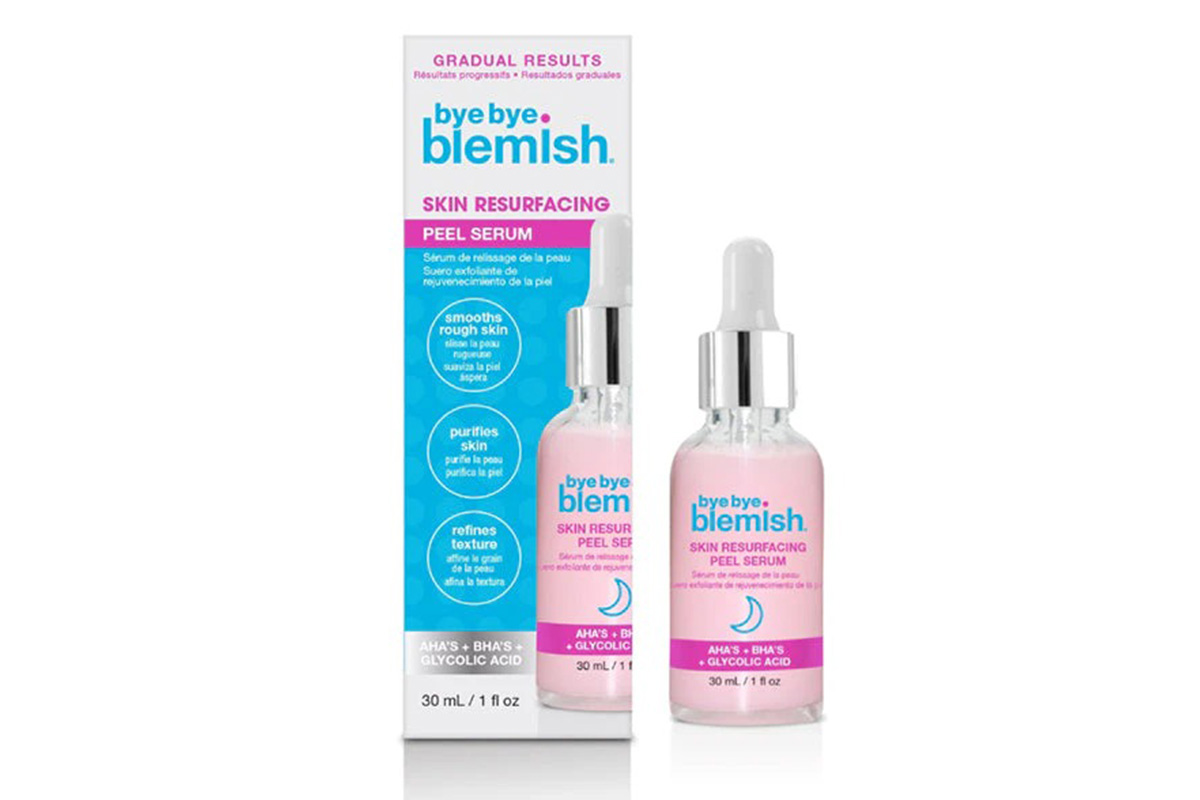
If you’re new to using this ingredient, it’s recommended to start with lower concentration products, such as toners containing 5–7% glycolic acid. Apply them once or twice a week, gradually increasing frequency to avoid irritation. Also, be sure to use sunscreen during the day, as AHAs can increase your skin’s sensitivity to UV rays.
Product Recommendations
If you’re looking for products containing glycolic acid that can easily fit into your routine, here are a few great options we recommend:
- Revuele Anti-Pimple Facial Cleansing Foam – a lightweight foam for daily use, ideal for oily and acne-prone skin. Its intensive formula with salicylic and glycolic acids gently removes impurities and excess oil while targeting blemishes. Thanks to its light texture and fragrance-free formula, it’s suitable for everyday use and sensitive skin. It doesn’t cause irritation or further dryness.
- Bye Bye Blemish Night Peel Serum with AHA, BHA, and Glycolic Acid – an intensive facial peel serum based on alpha-hydroxy acids, beta-hydroxy acids, and glycolic acid. Designed to even out skin tone and cleanse pores overnight. It helps fight acne and smooths uneven skin texture. Apply to clean, dry skin and leave on for no more than 10 minutes before rinsing off with lukewarm water. Use preferably in the evening, no more than twice a week.
- Revolution Skincare Glyco Glow Facial Exfoliating Toner – a toner with 5% glycolic acid and ginger extract that exfoliates, smooths, and instantly brightens the skin, giving the complexion a more even appearance. Start using it gradually. It’s recommended to monitor your skin’s reaction and then use it up to three times a week, both morning and evening.
Glycolic Acid for the Body – How and Where to Use It
Although it’s most commonly mentioned in the context of facial care, it can also play a highly beneficial role in body skincare. It’s especially effective on areas where the skin is thickened, uneven, or prone to ingrown hairs. Such as the shoulders and back, upper arms and thighs, groin and bikini area, elbows, knees, and heels.
Body products containing glycolic acid come in various forms – lotions, milks, shower gels, spray tonics, and even treatment peels. They usually contain a higher concentration of glycolic acid than facial products.
Spray products are especially convenient because they make it easier to apply to hard-to-reach areas, like the middle of the back. One such product is Revuele Anti-Pimple Body Spray. It combines glycolic and salicylic acids – great for those who want an extra cleanse for the skin on their back, shoulders, or upper chest without having to rub the product in with their hands.

Recommended use:
- after showering, on clean, dry skin;
- in the evening, so the acid has time to work without sun exposure;
- 2 to 3 times a week, or as directed by the product.
If you use lotions or creams with glycolic acid on your body, avoid applying them immediately after shaving or waxing. Wait at least 24 hours to prevent stinging or irritation. It’s also recommended to use glycolic acid products in the evening. If you’re going out in the sun or spending time outdoors, be sure to apply a high-SPF cream, as skin becomes more sensitive to UV radiation after using glycolic acid. This increased sensitivity can raise the risk of sunburn, hyperpigmentation, and premature skin aging.
When Lactic Acid Is a Better Choice Than Glycolic Acid
Glycolic acid and lactic acid are AHAs (alpha-hydroxy acids) used for chemical exfoliation – removing dead skin cells from the surface to reveal smoother, softer, and more radiant skin. The main difference between them lies in the size of their molecules.
Glycolic acid is one of the most powerful skincare ingredients, known for its ability to remove dead skin cells and stimulate regeneration. Due to its molecular structure, it penetrates deeply and works effectively on all layers of the skin. However, for those with sensitive skin or beginners introducing chemical exfoliation into their routine, lactic acid is the perfect starting point.
Why is lactic acid often recommended as the first step? Because of its gentler yet still effective action. It provides a mild exfoliation while simultaneously hydrating the skin, making it an ideal starting point before using glycolic acid. In one of the upcoming posts, you’ll have the chance to read more about lactic acid.
In the world of skincare, there’s no one-size-fits-all solution. But one universal truth remains: knowledge and careful introduction of active ingredients are the keys to healthy, well-nourished skin in the long run. That’s why every new ingredient should be an opportunity to better understand your skin, rather than a source of confusion.
How do you plan to improve your skincare routine? What’s your next step in exploring active ingredients? Share your thoughts with us!
